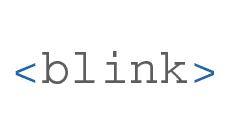Responsive web is here to stay. Some websites are very hard to read when presented at full scale on a tiny screen. I found it cumbersome to rewrite all my CSS styles inside a @media tag to make it responsive at different screen size. However, lately I have been using a few lines of codes that make my page look good no matter where it is displayed.
The three amigos
- width
- max-width
- min-width
Those are the three properties that I use to make an element display correctly no matter what the screen size is. Example:
.main-content {
width:100%;
max-width:960px;
min-width:320px;
}
What this is going to do is display the main-content at 960px if you have a large screen. If a user is on a 480px screen it will adjust automatically. And it limits the minimum size to 320px.
One thing I like to add is the box-sizing property to make sure I can add some padding to my content. This way the text will not be hugging the the border of the screen. So the overall code is this:
.main-content {
width:100%;
max-width:960px;
min-width:320px;
border-sizing: border-box;
padding: 6px 12px;
}
This does not replace the @media tag entirely but it helps you make part of your layout responsive without having to write screen specific code.
Enjoy!




Comments(1)
John Doe :
This is a great post! I've been looking for a simple responsive CSS trick and this one is perfect.
Let's hear your thoughts